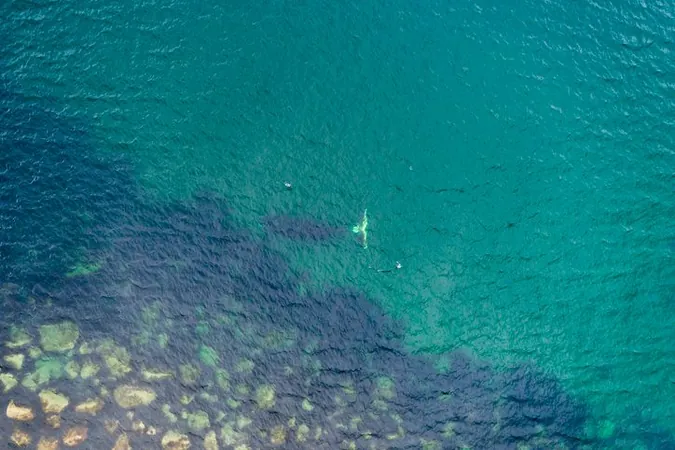
Meet the Bowhead Whale: The Arctic's Incredible Living Legend That Can Live Up to 200 Years!
2024-11-27
Author: Rajesh
A Historical Perspective
First identified by the esteemed scientist Carl Linnaeus in 1758, bowhead whales were initially classified as part of the right whale group. It wasn't until 1821, when John Edward Gray proposed a separate classification, that bowheads were recognized for their distinct characteristics, including their steeply arched mouths resembling an archer's bow.
The Arctic Home
Bowhead whales are indigenous to the Arctic and subarctic waters, primarily inhabiting shallow coastal areas beneath ice floes, where they thrive despite the harsh environment. Their thick blubber provides vital insulation, allowing them to endure the coldest temperatures of the polar regions.
Gigantic Yet Gentle Giants
These majestic whales can reach lengths of 16 to 18 meters (52 to 59 feet) and weigh up to 80 tonnes. Surprisingly, they use their massive, powerful heads not just for swimming but for breaking through thick ice, sometimes measuring up to 60 centimeters (about 24 inches)! Without teeth, bowheads use their long baleen plates—some measuring up to 4 meters—to filter krill and small fish from the water.
A Vocal Powerhouse
Dubbed the "jazz singers of the deep," bowhead whales produce a stunning array of vocalizations, including unique songs that change each year. Unlike the structured patterns of humpback whale songs, bowhead melodies are more freeform, reflecting their adaptability and intelligence. These vocal abilities may serve various purposes, from navigation to communication and possibly even mating displays.
The Incredible Longevity of the Bowhead Whale
Bowhead whales hold the record for the longest lifespan of any marine mammal, with some believed to live up to 200 years! A sensational discovery in 2007 included a whale that had lived for over a century with a harpoon from the 1800s embedded in its neck. Their slow growth rate and longer lives are thought to be a result of their challenging environment, contributing to effective DNA repair processes that reduce cancer risks.
Threats and Conservation
Despite their resurgence from historical whaling, bowhead whale populations still face significant threats from human activities, including climate change, pollution, and fisheries interactions. While their global population is estimated at about 25,000 and is classified as "Least Concern," certain subpopulations, particularly in the East Greenland-Svalbard-Barents Sea and Okhotsk Sea, are listed as endangered.
Conclusion: Embracing the Mystery of the Bowhead Whale
The bowhead whale is more than just a giant; it is an emblem of endurance and adaptability in changing ocean environments. While we continue to study and observe these incredible creatures, it is crucial to protect their habitats and ensure they remain a vibrant part of our world’s marine ecosystems. By safeguarding the bowhead whale, we preserve not just a species but the intricate web of life that sustains our planet's oceans.





 Brasil (PT)
Brasil (PT)
 Canada (EN)
Canada (EN)
 Chile (ES)
Chile (ES)
 España (ES)
España (ES)
 France (FR)
France (FR)
 Hong Kong (EN)
Hong Kong (EN)
 Italia (IT)
Italia (IT)
 日本 (JA)
日本 (JA)
 Magyarország (HU)
Magyarország (HU)
 Norge (NO)
Norge (NO)
 Polska (PL)
Polska (PL)
 Schweiz (DE)
Schweiz (DE)
 Singapore (EN)
Singapore (EN)
 Sverige (SV)
Sverige (SV)
 Suomi (FI)
Suomi (FI)
 Türkiye (TR)
Türkiye (TR)